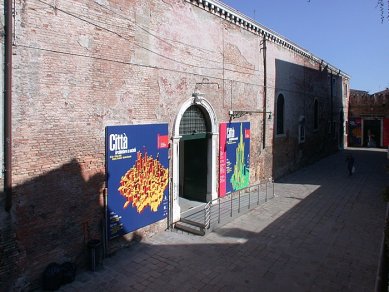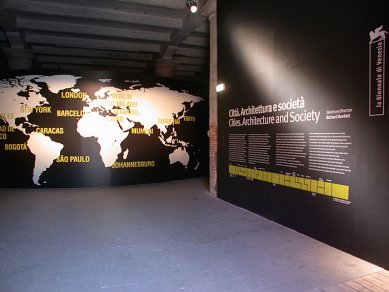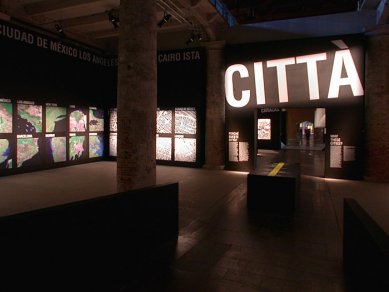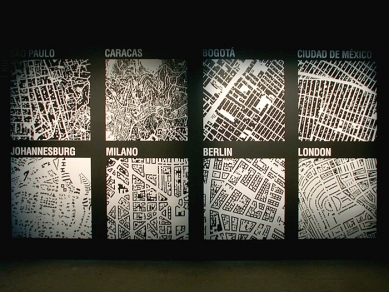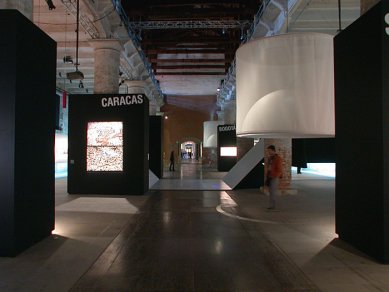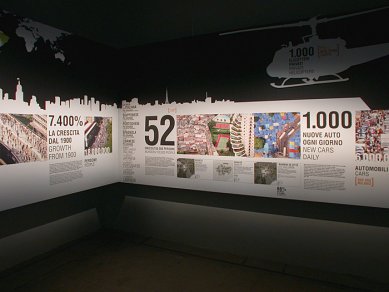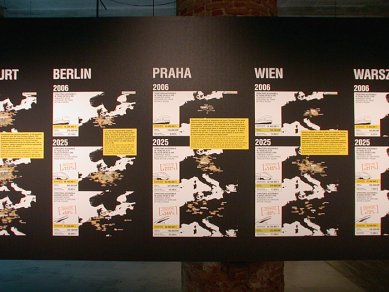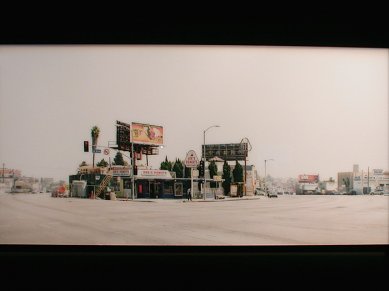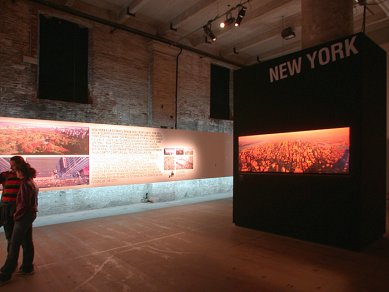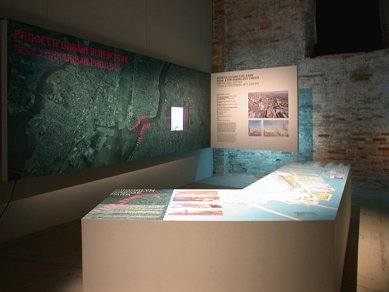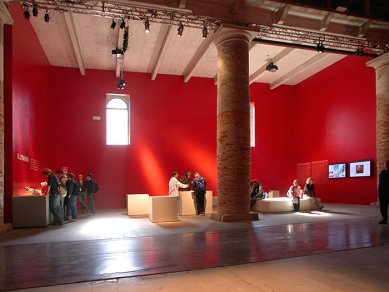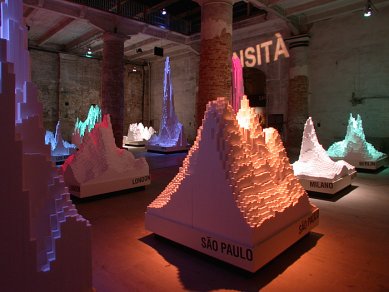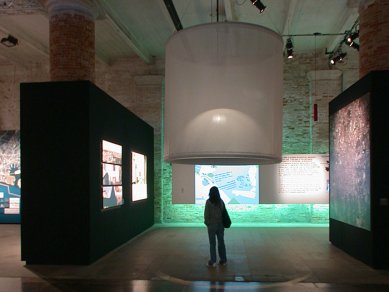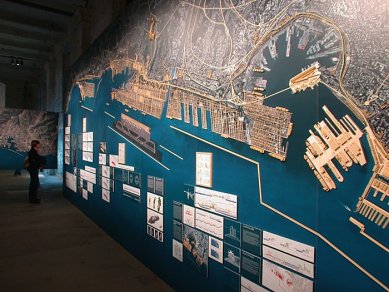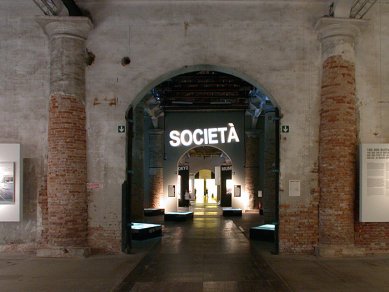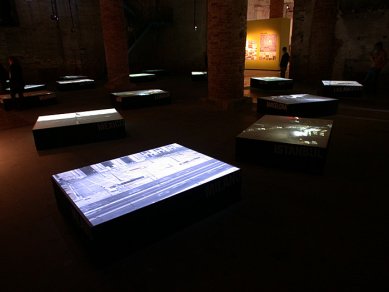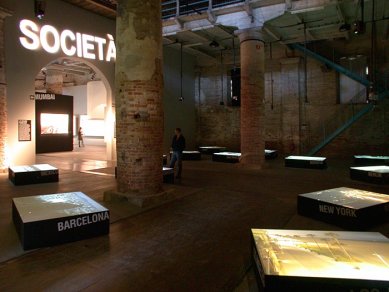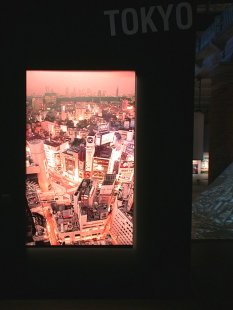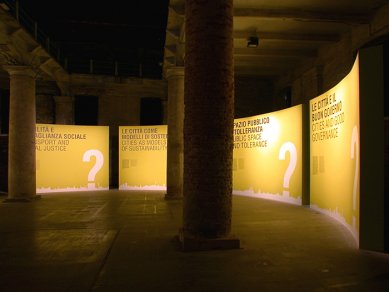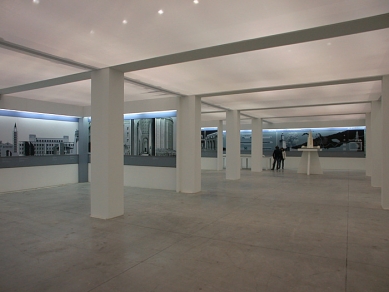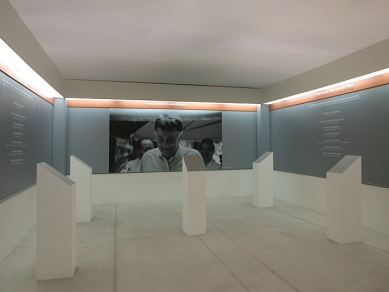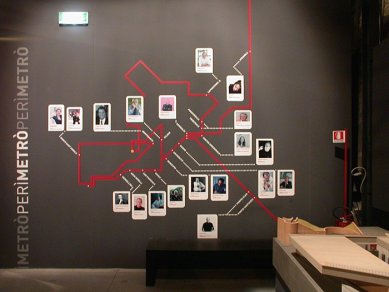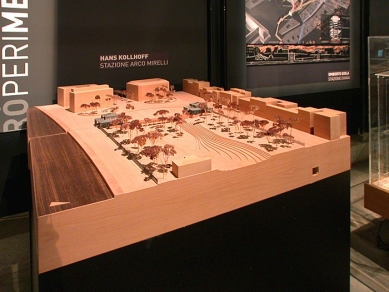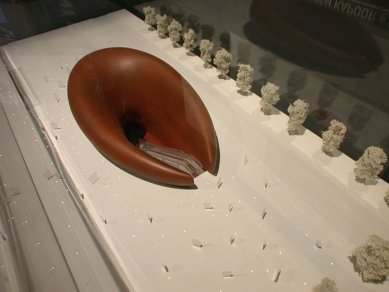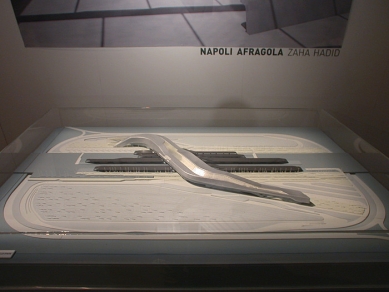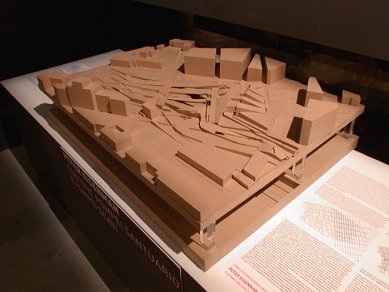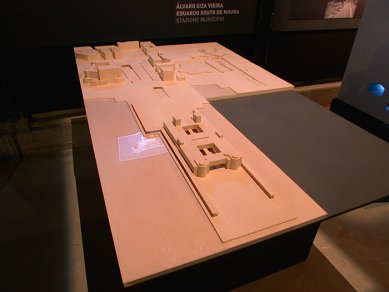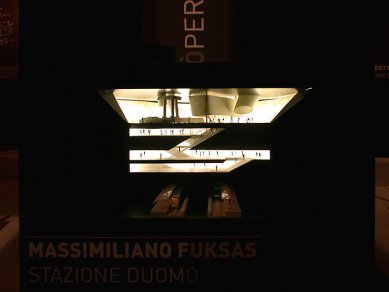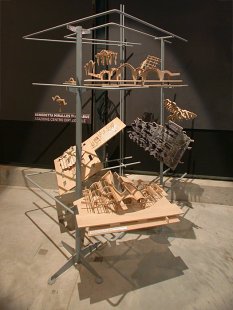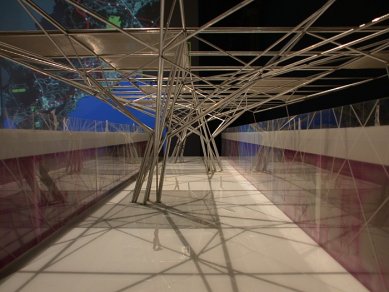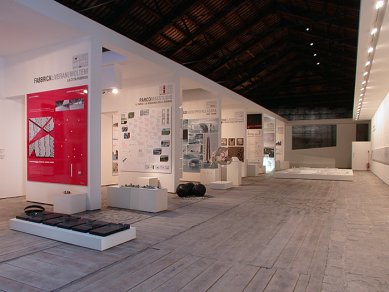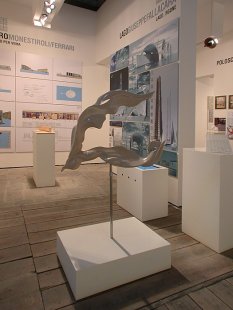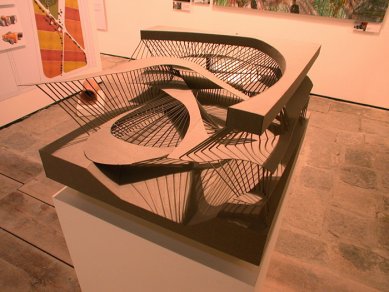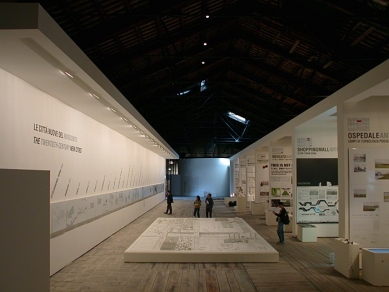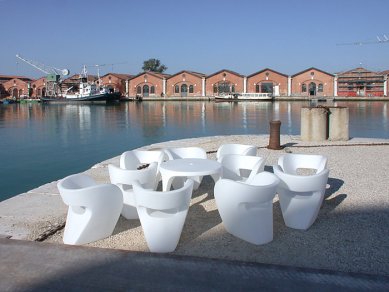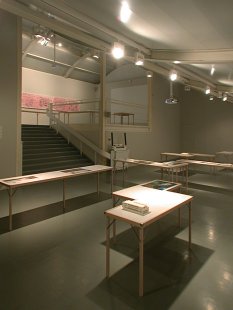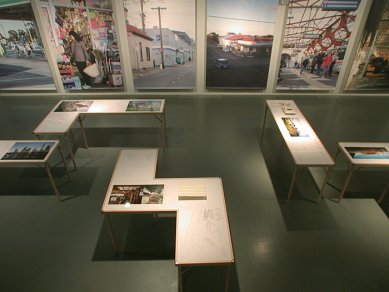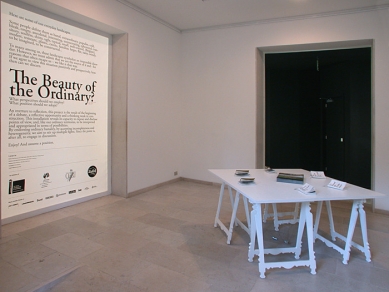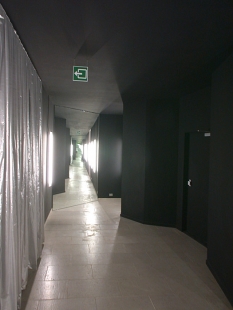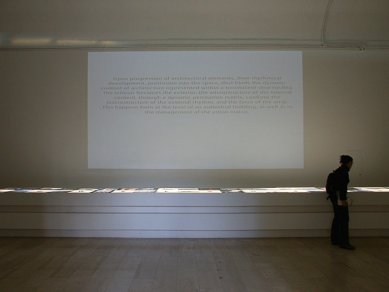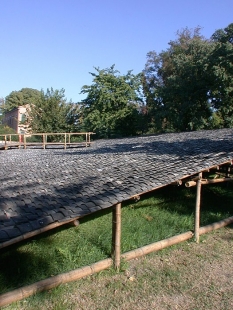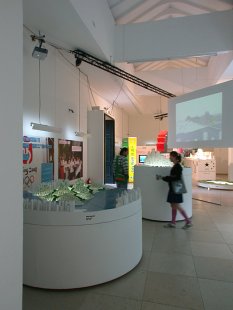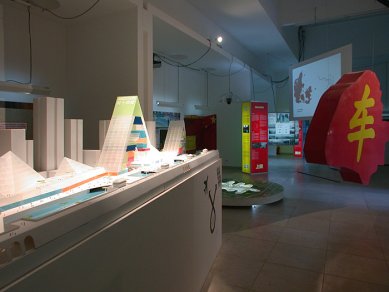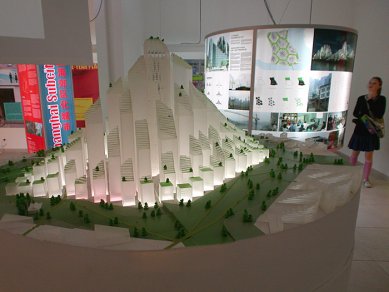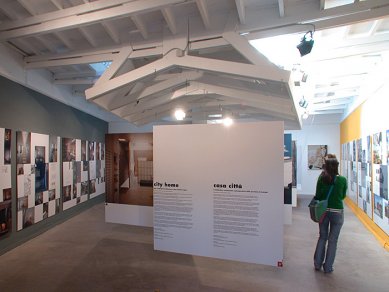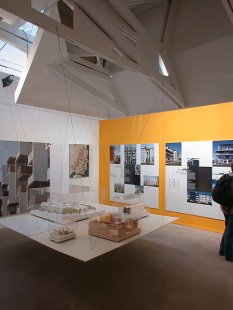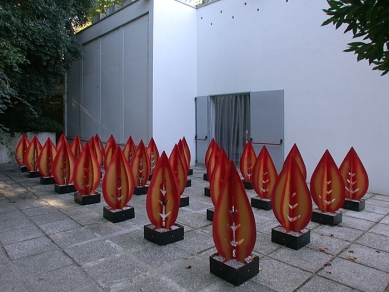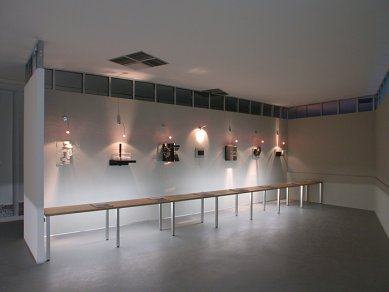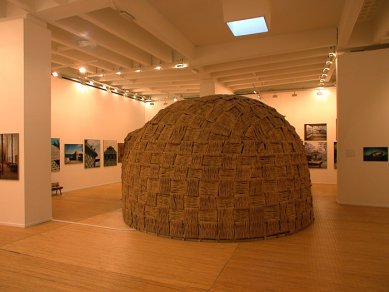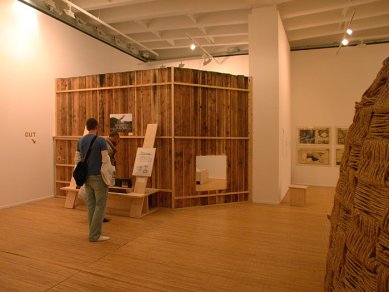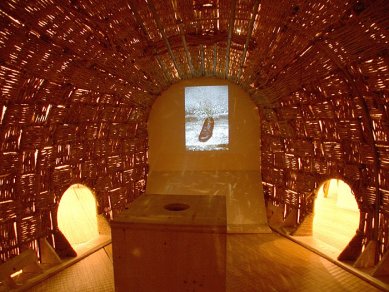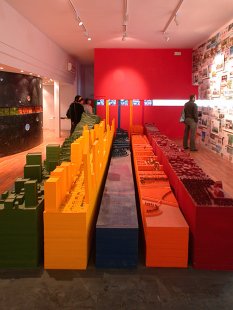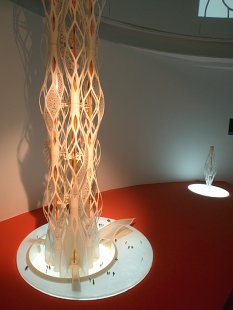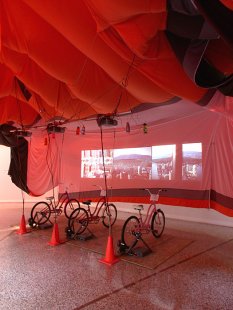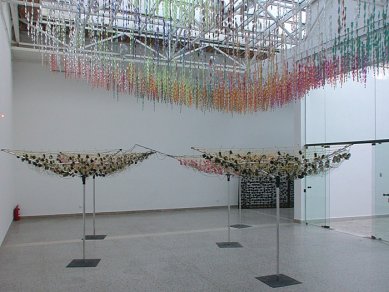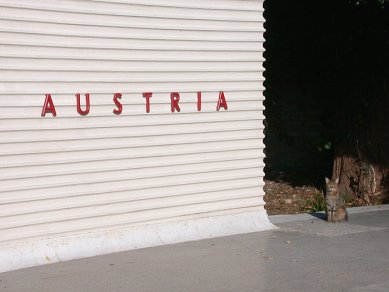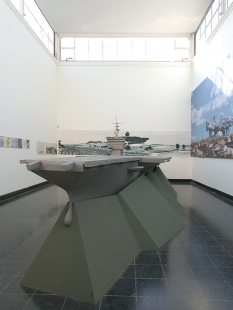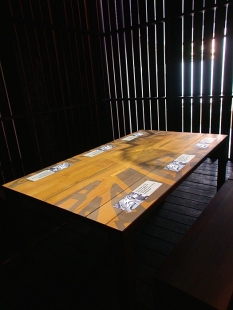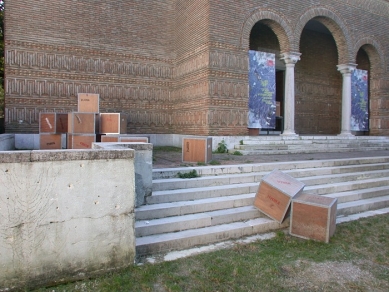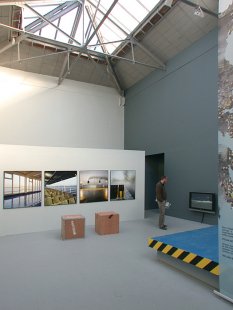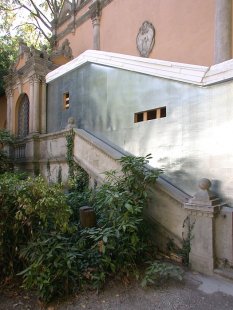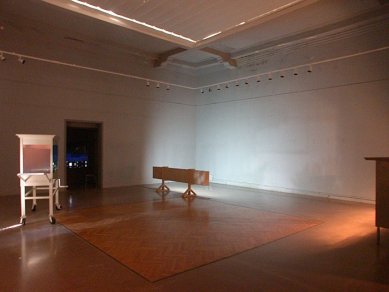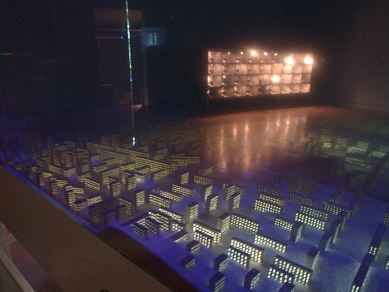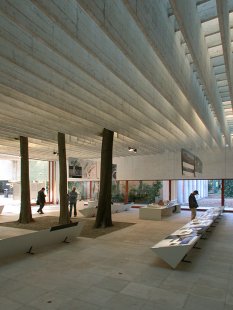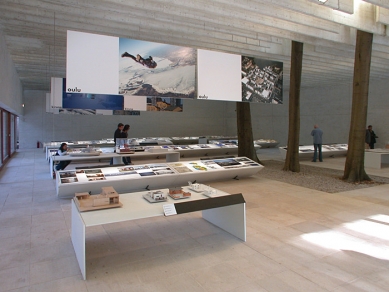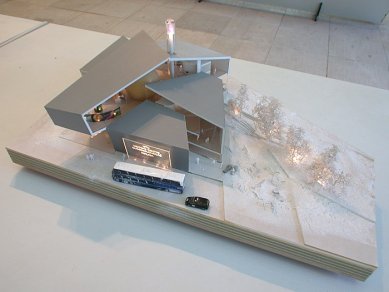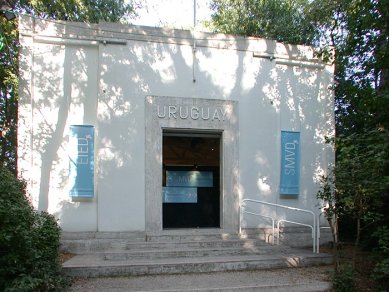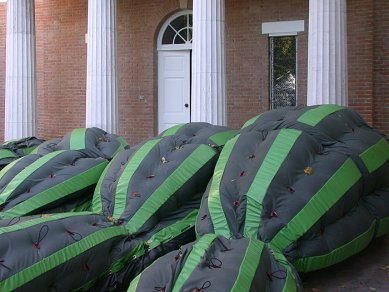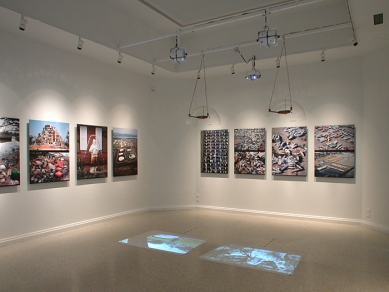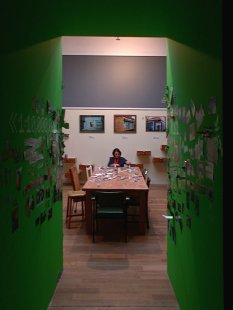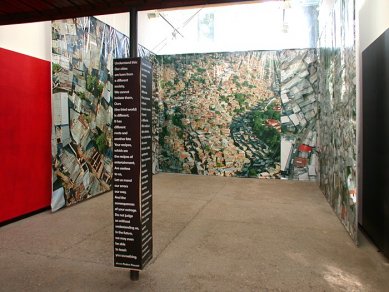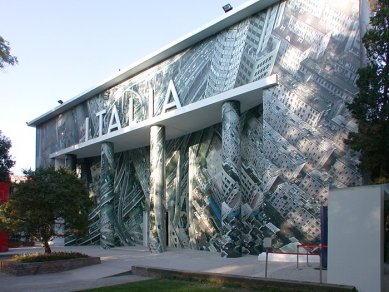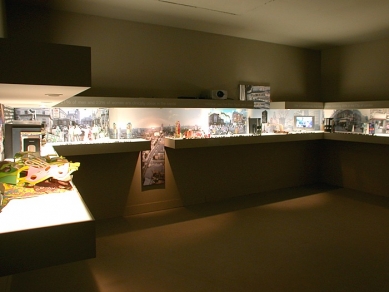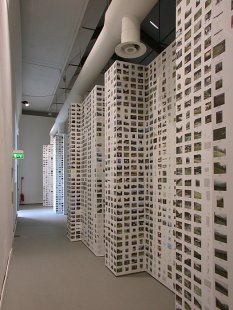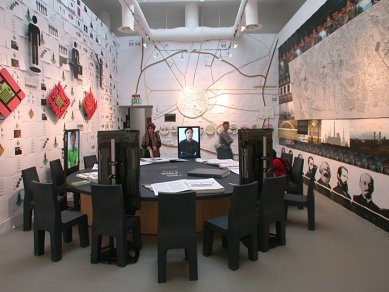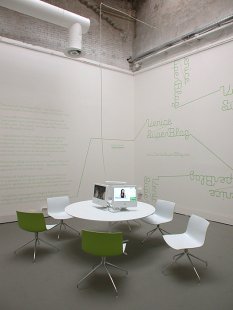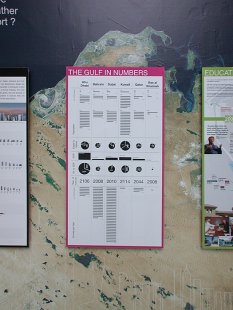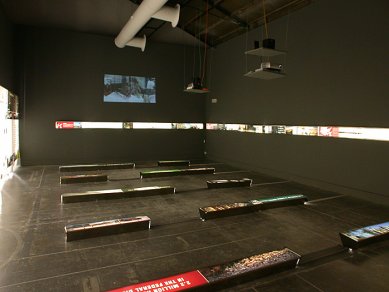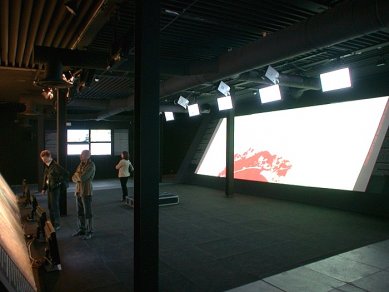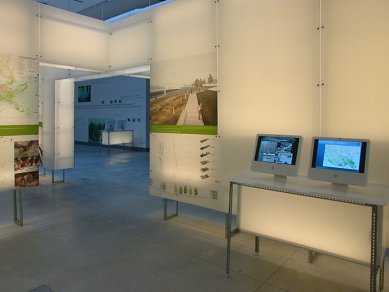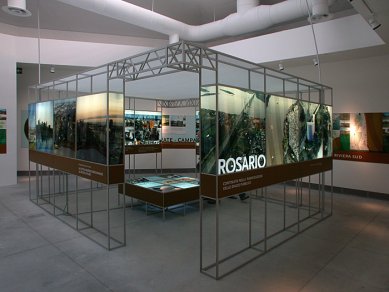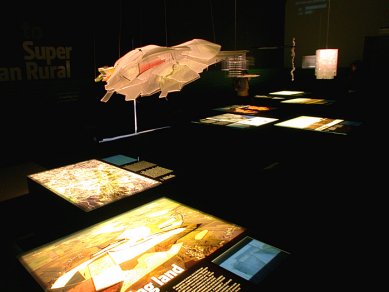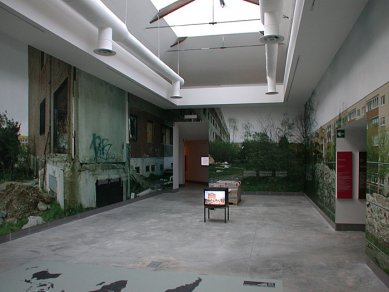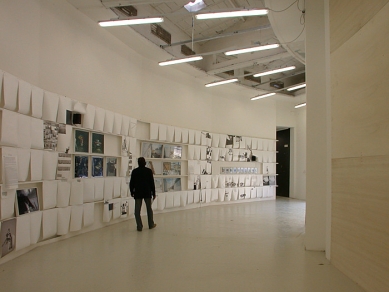The number of countries exhibiting this year in the Venetian Giardini has grown compared to previous years, and the duration of the entire event has also been extended by two weeks. The area of the second thematically focused part of the biennale in the Arsenale has been enlarged, and there are more accompanying events scattered throughout the city. Despite the undeniable increase in spatial demands, the biennale felt as if it had fewer exhibits and exhibiting personalities. It was not as much of a show as in previous years when world-renowned architects showcased models of current realizations, which were mostly the only unifying idea of the entire event.
Richard Burdett, the curator of this year's biennale, chose the motto "Cities, Architecture, and Society." For the exhibition in the Arsenale, sixteen very different metropolises were selected. The choice of cities was not random. Besides the fact that Burdett has been dealing with this theme at London’s LSE for many years, last year saw the magical threshold of 50% of people living in cities surpassed. While a hundred years ago, the percentage was less than ten, by the middle of this century, three-quarters of the world's population will live in cities. The exhibition seeks to understand what is happening (and will happen) in the largest megacities of the world.
Out of habit, I first visited the national exhibits in the Giardini. Switzerland transformed into the Dominican Republic, Denmark and Hungary advertised China, and there were more depressive presentations than one had gotten used to in previous years. After touring the gloomy exhibitions in the Russian, Czech, Dutch, and Belgian pavilions, I was greeted at the end of the first day in the dimming Giardini by the radiant Spanish exhibition. The light wooden floor, the soft diffused light coming from glass panels, and dozens of video portraits of the women behind quality Spanish architecture were a healing balm for the soul. The German and French pavilions, two ancient cultural and political rivals, were the only places I returned to with enjoyment.
The second day began and ended with visits to national exhibits and accompanying events scattered throughout the island. These were mostly individual activities of various countries, and I personally see the future of the biennale in these events. They are much less rigid, the stereotypes are eliminated, and the smell of institutionalism is also absent. It is no longer a fashion show of national pavilions lined up like soldiers along several axes. Hong Kong or Luxembourg still held close to the main entrance to the Arsenale. Slovenia, Iceland, or young Austrians had to be sought after in the city. However, I was most enthusiastic about the Serbian exhibition. Originally, they were supposed to exhibit in Giardini together with Montenegro. The political situation, however, decided that Serbia had to find its own spaces. The choice fell on a three-story house in a secluded square between St. Mark's Square and the Arsenale. While the Serbian pavilion did not attract as many visitors as it would have if it were part of one of the two main sections of the biennale, everything was compensated by the personal approach to each visitor. At the entrance, a hostess welcomed you, explained everything, and, if interested, introduced you to the curator, who, alongside other team members, worked intensely on the "New Belgrade" project. And this was free of charge.
The Arsenale exhibition, dedicated to detailed analyses of sixteen world metropolises, is separated by a red space named illymind, where you receive a lethal dose of black coffee for free so that you can focus fully in the second half of the exhibition. Although the authors tried to present data about the cities in a fun way, this refreshment station is appropriate. It is almost impossible to keep attention in front of all sixteen booths with numbers, tables, bullet-point writings, and media projections. Ultimately, it would have been enough to buy a catalog and gradually read the individual passages during free times. Spending such a vast amount of information all at once was challenging.
The main novelty of the biennale was the fascination with China. Its spirit permeated the entire biennale area this year. Not only did every second visitor to Venice come from Asia, but some national pavilions were also influenced by Chinese production (Denmark, Hungary, ...). The most populous country in the world accepted the whole matter with a calm head. Its pavilion was located at the very end of the Arsenale. In fact, it was hardly a pavilion at all. Wang Shu and Xu Jiang merely stacked 60,000 old ceramic roof tiles from demolished buildings, which had to give way to greedy development projects of multinational companies, onto a bamboo structure.
Giardini di Castello - national exhibitions
Argentina title:
Latitud 33° 41’ S, Longitud 59° 41’ Ocommissioner: Daniel Silberfaden
Armenia title:
Nature featuring City, City featuring peoplecommissioners: Ashot Haykazun Grigoryan, Ara Zaryan
location: Palazzo Zenobio, ex Collegio Armeno Moorat-Raphael, Dorsoduro 2596
Australia title:
Micro-Macro Citycommissioner: Lucy Turnbull
web:
www.architecture.com.auFor the first time I visited the biennale, the pavilion was open. The lightweight form, heavily influenced by Glenn Murcutt, did not disappoint even inside.
Belgium title:
The Beauty of the Ordinary? commissioner: Label Architecture
web:
www.labelarchitecture.beAccording to the title of the exhibition, the Belgians searched for beauty in ordinary things. However, they only included themselves in the list of other boring and depressing exhibits.
Brazil commissioner: Manoel Francisco Pires da Costa
curator: Jacopo Crivelli Visconti
web:
www.bienalsaopaulo.org.brPeople's Republic of China title:
Tiles Garden: A Dialogue Beyond City, Between An Architect And An Artistcommissioner: Fan Dì An
curator: Wang Mingxian
The most populous country in the world accepted the whole matter with a calm head. Its pavilion was located at the very end of the Arsenale. In fact, it was hardly a pavilion at all. Wang Shu and Xu Jiang merely stacked 60,000 old ceramic roof tiles from demolished buildings, which had to give way to greedy development projects of multinational companies, onto a bamboo structure.
Montenegro title:
New Effortscommissioner: Spasoje Krunič
curator: Miloš Perovič
Czech Republic and Slovak Republic title:
MetaCitycommissioners: Radomíra Sedláková, Pavel Piekar
Denmark title:
Co-Evolutioncommissioner: Danish Architecture Centre
curators: UiD
web:
www.uid.dk/co-evolutionCreated through collaboration between young Chinese and Danish architectural firms. In addition to Venice, the exhibition was also shown at the 2nd Architectural Biennale in Beijing and DAC in Copenhagen. The theme was sustainable development. With the kind of development that China has experienced in recent years, it cannot afford to make mistakes in its urbanization policies. Therefore, it makes serious decisions based on the experiences and knowledge of Western countries. Time will tell if that is the right approach.
Estonia title:
Joint Spacecommissioner: Pille Epner
curator: Ülar Mark
web:
www.urbanmark.ee/veneziaFinland title:
City Homecommissioners: Severi Blomstedt, Roy Mänttäri
The bravura of current Finnish architecture likely lies in small constructions. The large projects presented this year did not impress much. Thankfully, Aalto's wooden pavilion saved the day.
Macedonia title:
The City of Possible Worldscommissioner: Frosina Zafirovska
curators: Minas Bakalcev, Mitko Hadži Pulja
location: Palazzo Zenobio, ex Collegio Armeno Moorat-Raphael, Dorsoduro 2596
France title:
Métavillacommissioner: Francis Lacloche
web:
www.exyzt.orgThe clear winners of this year.
Georgia title:
Past, Present and Future of the capital of Georgia - Tbilisicommissioner: David Abuladze
curators: Elisabed Giorgadze, Maka Memanishvili
location: Chiesa di San Gallo, Campo San Gallo, San Marco
Holland title:
Seeing is Knowing: the Dutch urban perspectivecommissioner: Netherlands Architecture Institute
curators:
Aaron Betsky, Martien de Vletter
web:
www.nai.nlAaron Betsky's perspective on the history of a city, but not from the perspective of urban plans and abstract schemes, but from drawings and architectural visualizations.
Chile title:
Cultural Palacio La La Monedacommissioners: Alejandro Manriquez, Patricia Rivadeneira
curator: Pablo M. Lopez
location: Palazzo Zenobio, ex Collegio Armeno Moorat-Raphael, Dorsoduro 2596
Croatia title:
In - between the systemscommissioner: Andrija Rusan
web:
www.randic-turato.hrIceland title:
The Icelandic National Concert & Conference Centre. The project Eastern Port of Reykjavikcommissioner: Thórhallur Vilhjálmsson
location: Istituto Provinciale per l’Infanzia “Santa Maria della Pietà”, Castello 3701
Ireland title:
SubUrban to SuperRuralcommissioner: Commissioner Shane O'Toole
curator: FKL architects
web:
www.architecturefoundation.ieItaly title:
La Città Nuova. Italia-y-2026. Invito a Vemacommissioner: Pio Baldi
curator: Franco Purini
web:
www.padiglioneitaliano.orgIn the largest pavilion of Giardini, besides the national exhibits of Croatia, Argentina, Ireland, and South Africa, there were also presentations from schools (Studio Basel ETH, Berlage Institute, Royal College of Art, MIT) and research projects.
Israel title:
Life Saver - Typology of Commemoration in Israel - Architecture and Societycommissioner: Michael Gov
curator: Tula Amir
web:
www.labiennale-israeli-pavilion.orgJapan title:
Unknown Japanese Architecture and Citiescommissioner: Terunobu Fujimori
Before you crawl through the low opening in the wooden fence, you must take off your shoes and carry them with you in a plastic bag. You can then more intensely perceive sensations while walking on bamboo mats. The Japanese exhibit unknown architecture, accompanied by raw models carved from a single piece of wood.
South Africa Title:
South Africa - Trans Formations: Between ownership and belonging, transitional space in the post-apartheid metropoliscommissioner: Lenin Shope
curator: Mphethi Morojele
South Korea title:
perma n stantcommissioner: Joh Sung-Yong
The strongest project was a skyscraper for the deceased. The organic structure, shaped like a giant muscle, stores spherical capsules with the dead, which activate and glow brightly upon sending a memorial text message.
Canada title:
SweaterLodgecommissioner: Greg Bellerby
curators: Greg Bellerby, Chris Macdonald
web:
www.sweaterlodge.caThis North American country exhibited an orange fleece jacket measuring 12.2 x 26.5 meters. 400 m² of fabric was produced by recycling used drink bottles. After the biennale, this piece of giant clothing will be transported back to Canada, where it will be cut into hats, scarves, and gloves for charitable purposes.
Colombia title:
Bogota: from chaos to meta-citycurator: Luis Carlos Colón Llamas
location: Palazzo Zenobio, ex Collegio Armeno Moorat-Raphael, Dorsoduro 2596
Cyprus title:
Porous Borderscommissioner: Petros Dymiotis
curators: Morpho Papanikolaou, Rena Sakelaridou
location: Spazio Eventi Libreria Mondadori, San Marco 1345
Lithuania title:
Urban Dicecommissioner: Sergejs Nikiforovs
curators: Ugis Senbergs, Sigmars Jauja, Didzis Jaudzems
location: Riva S. Biagio, Castello 2145
Luxembourg title:
Welcome to Paradisecommissioner: François Valentiny
curator: Fondation de l’Architecture et de l’Ingénierie
location: Castello 2126/A, Arsenale, Campo della Tana
web:
www.welcometoparadise.luThe attempt to make fun of oneself must be appreciated. It is all the easier when you make fun of how rich you are.
Germany title:
Convertible City - Modes of densification and dissolving boundariescommissioners:
Armand Grüntuch,
Almut Ernstweb:
www.convertiblecity.deHungary title:
re:orient - migrating architecturescommissioner: Zsolt Petrányi
curator: Attila Nemes
web:
www.reorient.huThe installation was probably meant to be exhibited next year at the Venice Art Biennale and possibly in the pavilion of another country. From a European perspective, the curator targeted the Asian taste typically seen in markets and added an academic flair to it.
Poland title:
Transfercommissioner: Agnieszka Morawinska
curator: Gabriela Switek
web:
www.labiennale.art.plPortugal title:
Lisboscopiocommissioner: Claudia Taborda
web:
www.iartes.pt/bienalveneza2006Sculptures placed freely next to
Stirling's bookstore at the entrance to Giardini.
Austria title:
City = Form Space Netcommissioner:
Wolf D. Prixcurator: Reiner Zettl
web:
www.labiennale.atThree areas, three architects:
Hans Hollein (form), Friedrich Kiesler (space), Gregor Eichinger (network).
title:
Rock over Barocklocation: Ikona Gallery, Salone n. 2 dei Magazzini del Sale
A field for the young Austrian scene: Artec, Urs Bette, Delugan_Meissl, the next ENTERprise architects, Wolfgang Tschapeller, ...
Slovenia title:
Formula New Ljubljanacommissioner: Tomaž Brate
web:
www.sadarvuga.comlocation: Gallery A+A (San Samuele) San Marco 3073
Scandinavian countries title:
Arctic Cities: Kiruna, Oulu, Tromsøcommissioners: Roy Mänttäri, Eija Salmi
web:
www.northerngateway.noRomania title:
Remix! Urban drama for nine cubes and many playerscommissioner: Marius Marcu-Lapadat
Very playful.
Russia title:
Inhabited localitycommissioner: Eugeny Zyablov
curator: Eugeny Asse
Compared to last year, Russia has made a 180-degree turn. After a fresh student workshop, this year's pavilion gapes with emptiness and the feeling of a ghost town.
Greece title:
The dispersed urbanity of the Aegean archipelagocommissioners: Elias Constantopoulos, Lois Papadopoulos
curators: Elias Constantopoulos, Korina Filoxenidou, Katerina Kotzia, Lois Papadopoulos
Miniature Greece packed into wooden boxes.
Serbia title:
Project Belgradecommissioner/curator: Aleksandar Janković
web:
www.projectbelgrade.comOriginally, they were supposed to exhibit in Giardini together with Montenegro. The political situation, however, decided that Serbia had to find its own spaces. The choice fell on a three-story house in a secluded square between St. Mark's Square and the Arsenale. While the Serbian pavilion did not attract as many visitors as it would have if it were part of one of the two main sections of the biennale, everything was compensated by the personal approach to each visitor.
Singapore title:
Singapore Built and Unbuiltcommissioner: Commissioner Milton Tan
consultant:
Toyo Itolocation: Istituto Provinciale per l’infanzia “Santa Maria della Pietà”, Castello 3701
Spain title:
Spagna [f.] - We, the Citiescommissioner: Manuel Blanco
The light wooden floor, soft diffused light flowing from glass panels, and dozens of video portraits of the women behind the birth of quality Spanish architecture.
Switzerland theme:
Elliptic City: Independent Financial Center of the Americascommissioner: Urs Staub
curator:
Bernard Tschumiweb:
www.bak.admin.chThrough a play with numbers, Bernard Tschumi essentially revealed to us that there won’t be such a big difference between Switzerland and the Dominican Republic.
United Kingdom theme:
Echo Citycommissioner: Emily Campbell
curators: Jeremy Till and Ian Anderson, Ruth Ben Tovim, Tim Etchells, Hugo Glendinning, Jim Prevett, Trish O’Shea, Martyn Ware & Sarah Wigglesworth
web:
www.britishcouncil.orgThe only thing that surprised me anew was that the pavilion was entered from a terrace at the back of the house. Too many personalities gathered in a small area, and the only unifying element was chaos.
United States title:
After the Flood: Building on Higher Groundcommissioner: Robert Ivy
curator: Christian Bruun
web:
www.architecturalrecord.comAnother disaster, this time natural, united the American nation, and their pavilion once again had a unified expression. After last year's consequences of Hurricane Katrina in southern Louisiana, the curator decided to document the aftermath of the disaster in the most affected city, New Orleans, and to present architects' reactions to the situation after the flood.
Uruguay title:
SMVDcommissioner: Cristina Bausero
After many years of absence from the Venice Biennale, the doors to Uruguay’s pavilion finally opened. In addition to the SMVD exhibition (The Montevideo Seminars, spaces for reflection and collective proposal through urban projects), the space also very scantily housed an exhibition showcasing the work of architect Eladio Dieste. Aside from the fact that his exhibition (with beautiful models) was already seen at the last biennale, this traveling exhibition has visited most European cities.
Venezuela title:
Other’s Citycommissioner: Juan Pedro Posani
The English translation is powered by AI tool. Switch to Czech to view the original text source.

